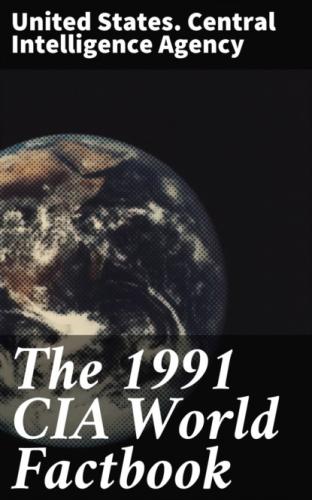Berat, Dibre, Durres, Elbasan, Fier, Gjirokaster, Gramsh,
Kolonje, Korce, Kruje, Kukes, Lezhe, Librazhd, Lushnje,
Mat, Mirdite, Permet, Pogradec, Puke, Sarande, Shkoder,
Skrapar, Tepelene, Tirane, Tropoje, Vlore
_#_Independence: 28 November 1912 (from Ottoman Empire); People's Socialist Republic of Albania declared 11 January 1946
_#_Constitution: an interim basic law was approved by the People's Assembly on 29 April 1991; a new constitution is to be drafted for adoption in four to six months
_#_Legal system: has not accepted compulsory ICJ jurisdiction
_#_National holiday: Liberation Day, 29 November (1944)
_#_Executive branch: president, prime minister of the Council of Ministers, one deputy prime minister of the Council of Ministers
_#_Legislative branch: unicameral People's Assembly (Kuvendi Popullor)
_#_Judicial branch: Supreme Court
_#_Leaders:
Chief of State—President of the Republic Ramiz ALIA (since 22
November 1982);
Head of Government—Prime Minister of the interim Council of
Ministers Ylli BUFI (since 5 June 1991);
_#_Political parties and leaders: Albanian Workers Party (AWP),
Ramiz ALIA, first secretary;
Democratic Party (DP), Sali BERISHA, chairman and cofounder with
Gramoz PASHKO;
Albanian Republican Party, Sabri GODO;
Ecology Party, Namik HOTI;
Omonia (Greek minority party), leader NA;
Agrarian Party, leader NA;
note—in December 1990 President ALIA allowed new political parties to be formed in addition to the AWP for the first time since 1944
_#_Suffrage: universal and compulsory at age 18
_#_Elections:
President—last held 30 April 1991 (next to be held spring 1992); results—President Ramiz ALIA was reelected with token opposition;
People's Assembly—last held 31 March 1991 (next to be held spring 1992); results—AWP 68%, DP 25%; seats—(250 total) preliminary results AWP 168, DP 75, Omonia 5, Veterans Association 1, other 1;
note—the AWP's votes came mostly from the countryside while the DP won majorities in the six-largest cities;
_#_Communists: 147,000 party members (November 1986); note—in March 1991 the Albanian Workers' Party announced that it considered itself no longer Communist but socialist
_#_Member of: ECE, FAO, IAEA, IOC, ISO, ITU, LORCS, UN, UNCTAD, UNESCO, UNIDO, UPU, WFTU, WHO, WMO
_#_Diplomatic representation: the Governments of the United States and Albania agreed to reestablish diplomatic relations to be effective from 15 March 1991 and to exchange diplomatic missions at the level of ambassador
_#_Flag: red with a black two-headed eagle in the center below a red five-pointed star outlined in yellow
_*Economy #_Overview: As the poorest country in Europe, Albania's development lags behind even the least favored areas of the Yugoslav economy. For over 40 years, the Stalinist-type economy has operated on the principles of central planning and state ownership of the means of production. In recent years Albania has implemented limited economic reforms to stimulate its lagging economy, provide incentives, and decentralize decisionmaking. In an effort to expand international ties, Tirane has reestablished diplomatic relations with the Soviet Union and the US. The Albanians have also passed legislation allowing foreign investment. Albania possesses considerable mineral resources and, until 1990, was largely self-sufficient in food; several years of drought have hindered agricultural development. Numerical estimates of Albanian economic activity are subject to an especially wide margin of error because the government until recently did not release economic information.
_#_GNP: $4.1 billion, per capita $1,250; real growth rate NA% (1990 est.)
_#_Inflation rate (consumer prices): NA%
_#_Unemployment rate: NA%
_#_Budget: revenues $2.3 billion; expenditures $2.3 billion, including capital expenditures of NA (1989)
_#_Exports: $378 million (f.o.b., 1987 est.);
commodities—asphalt, bitumen, petroleum products, metals and metallic ores, electricity, oil, vegetables, fruits, tobacco;
partners—Italy, Yugoslavia, FRG, Greece, Czechoslovakia, Poland, Romania, Bulgaria, Hungary
_#_Imports: $255 million (f.o.b., 1987 est.);
commodities—machinery, machine tools, iron and steel products, textiles, chemicals, pharmaceuticals;
partners—Italy, Yugoslavia, FRG, Czechoslovakia, Romania, Poland, Hungary, Bulgaria, GDR
_#_External debt: $NA
_#_Industrial production: growth rate NA
_#_Electricity: 1,690,000 kW capacity; 5,000 million kWh produced, 1,530 kWh per capita (1990)
_#_Industries: food processing, textiles and clothing, lumber, oil, cement, chemicals, basic metals, hydropower
_#_Agriculture: arable land per capita among lowest in Europe; one-half of work force engaged in farming; produces wide range of temperate-zone crops and livestock; claims self-sufficiency in grain output
_#_Economic aid: Western (non-US) countries, ODA (1988) $5.8 million
_#_Currency: lek (plural—leke); 1 lek (L) = 100 qintars
_#_Exchange rates: leke (L) per US$1—8.00 (noncommercial fixed rate since 1986), 4.14 (commercial fixed rate since 1987)
_#_Fiscal year: calendar year
_*Communications #_Railroads: 543 km total; 509 1.435-meter standard gauge, single track and 34 km narrow gauge, single track (1990); line connecting Titograd (Yugoslavia) and Shkoder (Albania) completed August 1986
_#_Highways: 16,700 km total; 6,700 km highway and roads, 10,000 km forest and agricultural (1990)
_#_Inland waterways: 43 km plus Albanian sections of Lake Scutari, Lake Ohrid, and Lake Prespa (1990)
_#_Pipelines: crude oil, 145 km; refined products, 55 km; natural gas, 64 km (1988)
_#_Ports: Durres, Sarande, Vlore
_#_Merchant marine: 11 cargo ships (1,000 GRT or over) totaling 52,886 GRT/75,993 DWT
_#_Airports: 12 total, 10 usable; more than 5 with permanent-surface runways; more than 5 with runways 2,440–3,659 m; 5 with runways 1,220–2,439 m
_#_Telecommunications: stations—17 AM, 1 FM, 9 TV; 246,000 TVs (1990); 210,000 radios
_*Defense Forces #_Branches: Albanian People's Army, Albanian Coastal Defense Command, Air and Air Defense Force, Frontier Troops, Interior Troops
_#_Manpower availability: males 15–49, 900,723; 743,594 fit for military service; 33,497 reach military age (19) annually
_#Defense expenditures: 1.0 billion leks, NA% of GDP (FY90); note—conversion of defense expenditures into US dollars using the official administratively set exchange rate would produce misleading results % @Algeria *Geography #_Total area: 2,381,740 km2; land area: 2,381,740 km2
_#_Comparative area: slightly less than 3.5 times the size of Texas
_#_Land boundaries: 6,343 km total; Libya 982 km, Mali 1,376 km, Mauritania 463 km, Morocco 1,559 km, Niger 956 km, Tunisia 965 km, Western Sahara 42 km
_#_Coastline: 998 km
